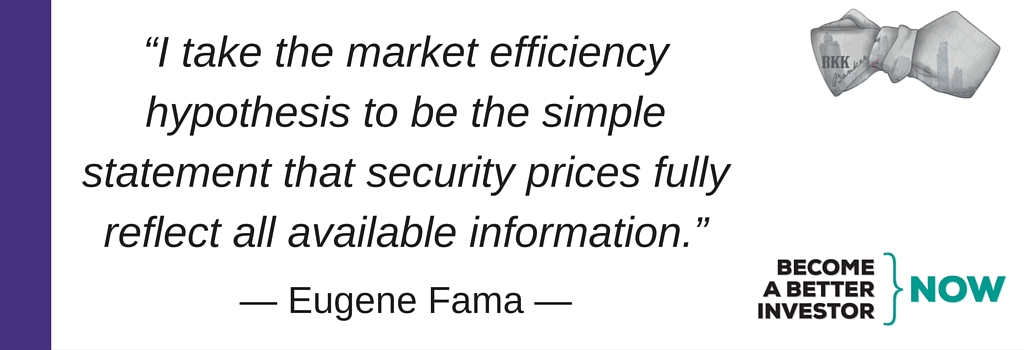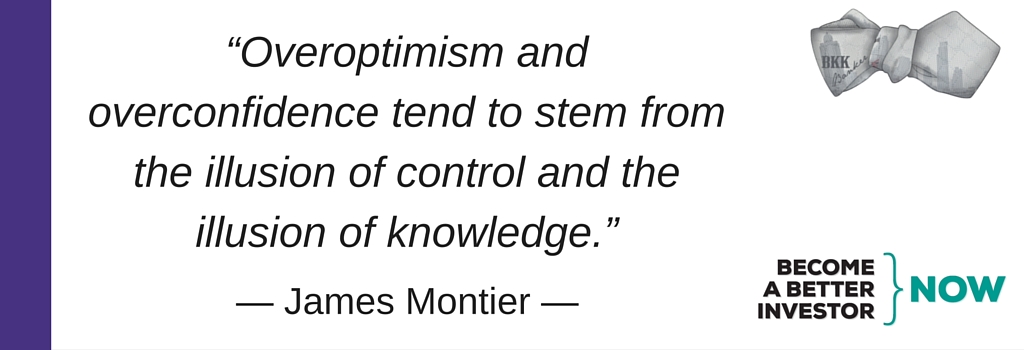Does More Information = More Money?
Information is a central concept in investing. It’s central in the sense that an investor’s informational advantage can be the sole reason he or she makes money in the market, and might even be able to do so continuously.
Whether you believe that there exist, skilled managers that can persistently beat the market or not, you most certainly will have learned that there are people making money from insider trading. Insider trading is about using an informational advantage to make money, and though it’s both unethical and illegal, we know that it happens.
Nobel laureate Eugene Fama said:
Again, it’s about information. Fama says it in the context of market efficiency, but the value of information is central to all parts of investing. But is it that simple? That the more information you’ve got the more money you’ll make?
Cognitive flaws reduce the value of information
We humans have some cognitive issues you’ll need to consider when it comes to information and processing information; biases and heuristics that might not give you the informational advantage you’d expect to make good investment decisions.
One issue is that we often tend to try to confirm our own beliefs. We do also many times give more weight to recent information and information that is more easily available. Hence, we don’t objectively acquire and process the information that we get.
Confirmation bias, recency bias and overconfidence work in tandem to create what Shefrin (2000) refers to as the illusion of validity. The issue with the illusion of validity is it makes you hold invalid beliefs as they’re not acquired through a rational and objective process.
According to Montier (2007) we suffer from two more illusions; the illusion of control that makes you believe we can affect the outcomes of uncontrollable events and the illusion of knowledge that you think your forecasts become more accurate solely due to considering more information.
Andrew previously said here on the blog: “In the trade-off between simplicity and precision, I choose simplicity”; referring to that more information doesn’t always add an equal amount of value when it comes to, for example, precision in forecasts.
The value of information
So far, I’ve mainly focused on why more information doesn’t necessarily lead to increased accuracy or better performance, but as I mentioned earlier, there certainly is value in information, and clear evidence of this, is that insider trading seems to be lucrative. If there wasn’t value in this informational advantage, there wouldn’t be any money to be made off insider trading, and I doubt it would then occur at all.
Years ago, back at university studying behavioral finance, I had a visiting professor, Michael Kirchler (great guy FYI), who ran some interesting experiments with his colleagues to understand the value of information better. As it seems that sometimes more information is adding value and sometimes not.
Trading “coin-flip assets”
What Prof. Kirchler and his colleagues did was to set up an experiment based on a “coin flip model”. First of all, they set up a scale of information ranging from weakly informed participants (e.g. private investors), to average informed (e.g. institutional investors, fund managers), to the most informed—the insiders.
The “asset” that the participants in this experiment can buy or sell is the value of the outcome of 10 coin flips. Let’s say a coin flip that return Heads is worth $1 and Tails $0. If the outcome of the coin flip series then is 5 Heads and 5 Tails, the value of the “asset” would be $5 (as $5×1 = $5), and if it was 10 Heads and 0 Tails the value would be $10. What the heck have coin flips got to do with information though, it’s just random outcomes?
Indeed, it is, but how they constructed the experiment was to give the participants different information at the point when they were making their decision to buy or sell the asset and at what price. The least informed investor didn’t know any of the outcomes of the 10 coin flips, while the average informed one had seen 5 out of 10 outcomes, and the most informed (the insider) knew 9 out of 10 outcomes.
The insiders, therefore, already know 9 out of the 10 outcomes, and so if all of those were Heads, they know that the asset is worth $9 for certain. According then to expected utility theory, the insider will assign a $9.50 value to the asset as there is a 50% chance that the last coin flip will return Heads (as $9 + 50% x $1 = $9.50).
It matters where you are on the information food chain
Prof. Kirchler and his colleagues ran many experiments adding in different conditions, and their conclusions from these experiments are very interesting. They show that the only ones beating the market, in this case making a positive return, are the participants with above-average information. In the coin flip model, it meant that only the participants who had seen 6 or more out of the 10 outcomes were informed enough to make money.
Another interesting find was that the least informed investor who knew no outcomes in advance and therefore most likely valued the asset at $5 (as (50% x $1) x 10 = $5), performed better than the participants that already knew between 1 to 5 out of the 10 outcomes.
This research implies that to be informed but not informed enough damages your returns; it’s actually better to have no information at all than being less or averagely informed.
Conclusively, we can see that the amount of information matters as well as how we then process this information. More information doesn’t necessarily translate into increased accuracy or enhanced returns, hence More Information ≠ More Money.
Do you believe more information = more money when investing in stocks?
Does more information = more money when #investing in #stocks?
— Alexander Wetterling (@BkkBanker) April 15, 2016
I’d love to hear from you in a comment below.
Feel free to share this article with your friends.
References
Montier, 2007. Behavioural Investing: A Practitioners Guide to Applying Behavioural Finance
Shefrin, 2000. Beyond Greed and Fear: Understanding Behavioral Finance and the Psychology of Investing
DISCLAIMER: This content is for information purposes only. It is not intended to be investment advice. Readers should not consider statements made by the author(s) as formal recommendations and should consult their financial advisor before making any investment decisions. While the information provided is believed to be accurate, it may include errors or inaccuracies. The author(s) cannot be held liable for any actions taken as a result of reading this article.


